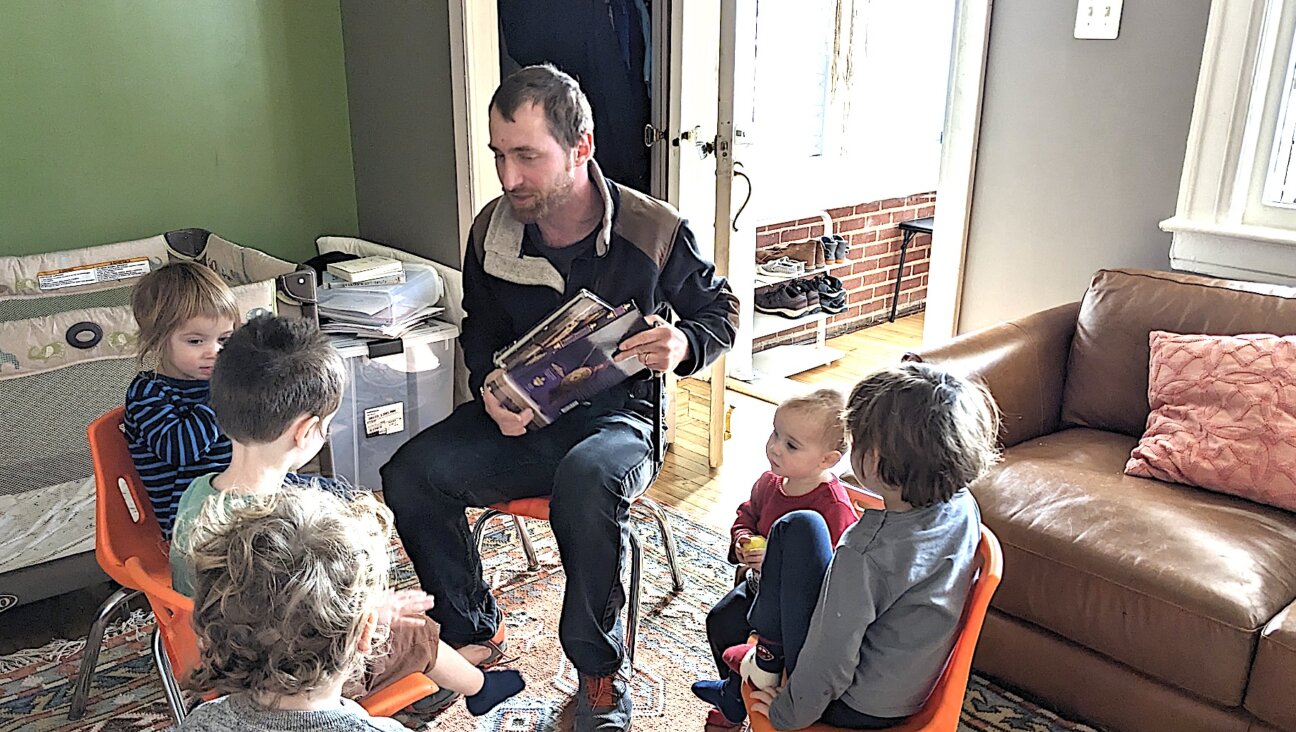Doctor’s Orders: Fruit Salad and a Cheese Sandwich
Despite the superpowers previously described in this space, medical students are normal people. They need places to lay their heads, white medical coats to keep out the rain, and three meals a day. Since their time for breakfast and dinner is sacrificed to sleep, three meals often means only one: lunch.
What’s for lunch, and where do I eat it? On the ground floor of the hospital I’m working in, there’s a diner with the same wishful-thinking menu of other diners — many things can be ordered and some of them are even available. I eat there occasionally. That is, I go with some other medical students, order an iced tea and a fruit salad, and eat my kosher bread and cheese from a bag I hide under the table. No one throws me out, and the iced tea is good.
The fruit salad, in a securely-fastened plastic box easily opened by surgeons or other coordinated people, is the same that’s available just next door, over the partition at the hospital’s coffee shop. But there, rules are different, and the hospital’s stern hierarchy is topsy-turvied. Attending physicians and patients’ cousins alike wait in line to grab the attention of the blue-shirted guys who take orders, man the cash registers and bag coffees and tuna wraps with frightening speed, calling women mi amor and discussing soccer with each other in Spanish. A sign over the cash register explains enigmatically: “All Kitchen Items Cannot Be Ordered Express.” In practical terms, this means that the blue shirts have complete control over what they pack up quickly and what they prepare in their own good time. I’m not sure how long it takes to become a regular in their eyes, but if I go there often enough and order a homemade iced tea, no sugar, I hope eventually they’ll start to recognize me.
As you move upstairs, the options change. There are vending machines with sweet and salty snacks, from a company that either has a dark sense of humor or doesn’t realize how many patients here are suffering from diabetes or heart failure. On the 12th floor there’s a dining room with a cafeteria that I’ve never seen open, a phalanx of vending machines, and a row of microwave ovens; at lunchtime the place is packed with nurses speaking Tagalog, Chinese and Spanish. Outside, above the door, there’s an inviting Dante-esque sign: “Patients Not Permitted.”
This is because patients are expected to stay in their rooms, awaiting care. Their care, like everything else in this hospital, is dependent on the combined efforts of thousands. And when something goes wrong, such mistakes are discussed exhaustively over lunch. At morbidity and mortality conferences, mishaps are analyzed over bagels and coffee. In line at the coffee shop, people whisper about the surgeon who operated on the wrong leg. These days, hospital administrators are terrified of the survey commission that’s about to come through town, flashing remorseless, efficient smiles and catching careless errors in every chart. Some mistakes don’t cost anyone’s life or limb — they merely make the patient’s dinner late. But even this can be a serious blow. As one resident told us students, “The best way to piss a patient off is not to feed them.”
A couple of nights ago I was in the E.R. A patient had been sent there with an unexpected heart problem after what he had assumed would be an uneventful checkup. I took his history, did a thorough physical, and then thought: What more can I possibly do for this person before the resident has time to come see him? I had already done his EKG, and I’d already apologized to him for the confusion in the E.R., which, to the untrained eye, is the natural state of the big-city emergency rooms. (That particular night, the air conditioning wasn’t working, a dozen or so cops were guarding their charges and the guy in the stretcher next to my patient was screaming, more out of churlishness than pain.) I asked, “Is there anything I can do for you?” The man looked at me, thought a bit, and said tentatively (in Spanish), “Well, I’m awfully hungry.”
It was a rare privilege to lay down a hot meal in front of this sick man. I didn’t stick around to see whether he liked the spaghetti, or, after he finished, how he managed to get his tray off the stretcher while staying attached to his heart monitor. I was too busy getting up to the 17th floor, where I would tuck into a saag paneer (an Indian dish) and drink some mango lassi. It was 9:15 p.m., finally time for lunch.
Zackary Sholem Berger looks forward to breakfast and dinner, too. Medical-student recipes and tales of past mistakes are available at [email protected].
















